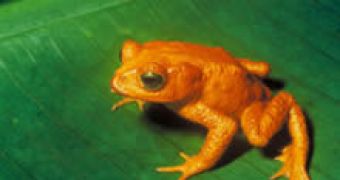The problem of determining the evolutionary relationships between various amphibian species has been neglected for far too long - the last amphibian tree of life has been constructed in the 1930s and it was mostly inferred from how these creatures look like. Although in recent years a number of amphibian populations such as frogs have witnessed massive declines due to habitat loss, scientists have also found a vast number of new species. But it wasn't clear how all these species were related to one another.
Biologist Darrel Frost and his colleagues from the American Museum of Natural History have finally addressed this problem in a new massive study, the largest so far, and have analyzed the DNA of 522 amphibian species which are considered representative for the almost 6000 known species of living amphibians. The analyzed amphibians included frogs, snake-like caecilians, salamanders and newts. The resulting tree of life has radically revised the understanding of amphibian evolution.
"The new amphibian tree of life shows that the taxonomy up to this point has been hopelessly flawed and provides us with a new taxonomy that offers the scientific community a new starting place from which to address questions about amphibian biodiversity," Frost said.
The amphibians are the first four-legged animals developing from fish and are the precursors of amniotes (reptiles, birds and mammals). Unlike amniotes, amphibians have a larval stage during which the newborn has to search for food in order to grow, followed by a metamorphosis to the adult stage. In case of amniotes, from dinosaurs to humans, the larval stage has transformed into the embryonic stage during which the animal isn't forced anymore to search for food on itself, but is being fed (either passively as it develops inside the egg, or actively by the mother, in case of mammals).

 14 DAY TRIAL //
14 DAY TRIAL //